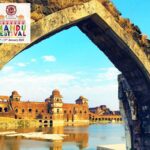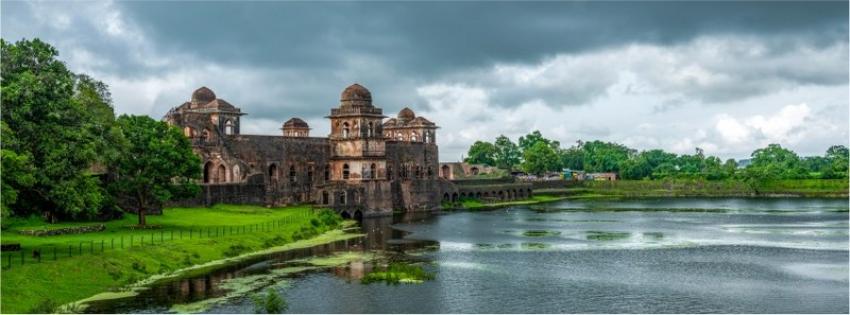
(NITN): Has the monsoon forced you to pull the plug on your travel plans? Then why not head to Mandu in Madhya Pradesh? Enamoured of its beauty during the monsoon, Emperor Jehangir would often spend the rainy season here. It was he who named the place Shadiabad or the ‘city of joy’. But Mandu’s history goes much beyond that.
Dotted with lakes, architecturally beautiful structures and monuments, and largely bereft of crowds, this ancient city perched among the Vindhya ranges is an explorer’s delight. There are many big and small structures, ranging from temples and mosques to forts and palaces, each unique in its own way. Most of the structures that we see today were built during the medieval period when Mandu was under Muslim rule.
As you climb up from the plains to reach the former citadel of Mandu (also Mandav, Mandavgarh), you will come across several mediaeval period gates – some simple to look at and others with elaborate arches and defensive measures. The major gates lie along the northern approach to the citadel since this is the route that the rulers of the Delhi Sultanate and the Moghuls followed.
Sightseeing in Mandu
Baz Bahadur Palace: Located in the town’s southern part, is the Rewa Kund (Lake) overlooked by Baz Bahadur Palace. You have to leave the car at the parking lot and take the broad steps to ascend to the 16th century palace; a bit of strenuous walking is required if you want to see the entire palace. The main portion of the palace is marked by a spacious open courtyard with a cistern in the centre and halls and rooms on all the four sides.
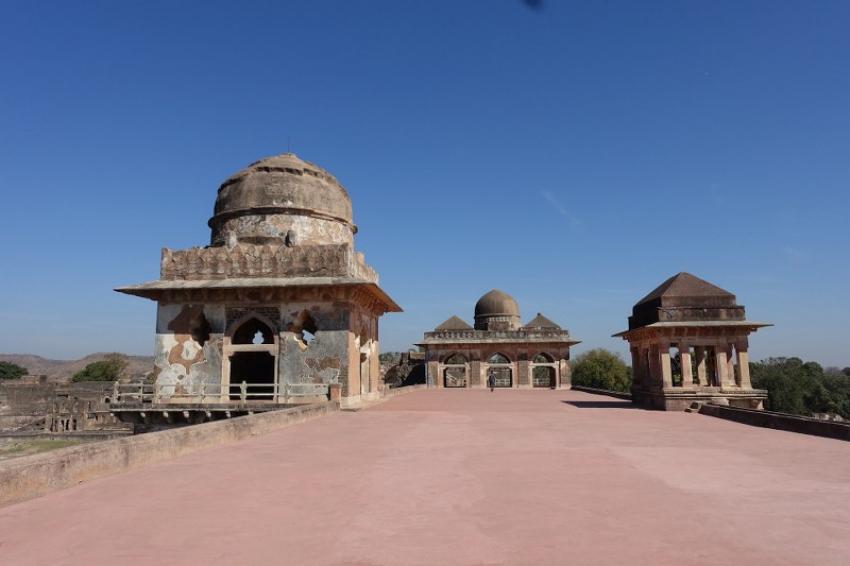
Roopmati’s Pavilion: It is the romantic tale of Prince Baz Bahadur and his consort Queen Roopmati, which makes it one of the most popular attractions of Mandu. Although the main building is said to have undergone several changes, the pavilions lie on the terrace of the original building. It is said that the queen used to come here every day to have a glimpse of the Narmada River flowing through the Nimar plains below. On a clear day, you might spy the silver stream from the pavilion.
Jami Masjid: Located near the market place is the Jami Masjid (inspired by the great Mosque of Damascus) which was completed in the mid-15th century. A flight of 30 stairs leads to a porch topped by a large dome. The mosque consists of a large hall with ‘jali screens on the sides.
Ashrafi Mahal: Originally built as a Madrasa (school) attached to the Jami Masjid, it consists of a large quadrangle enclosed on all sides by small cells. Three of the round towers along the four corners of the quadrangle are still present. It is said that the height of the north-eastern tower was increased by Mahmud Khalji to celebrate his victory over the Rana of Mewar (Rajasthan). His tomb lies to the west of the quadrangle.
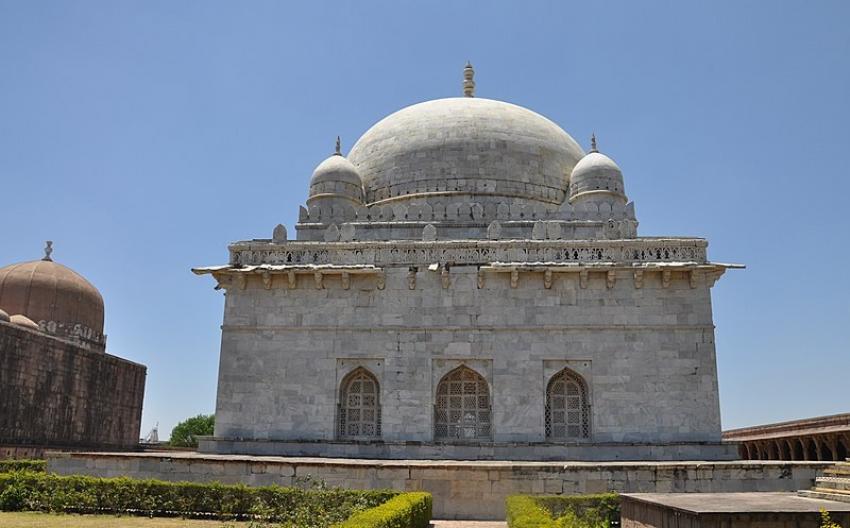
Hosang Shah’s Tomb: It is said that this 15th century marble edifice served as the inspiration for the famous Taj Mahal. Arched openings, domes and turrets, the finial ending in a crescent, are some of the notable architectural features of the tomb.
Jahaz Mahal: As the two artificial lakes, Munj Talao and Kapur Talao, fill up with rain water, the 120-metre long palace – with its open pavilions and overhanging balconies tucked between them – appears like a ship floating on water. A flight of stairs leads to the terrace decorated with domed pavilions. Taveli Mahal adjacent to the Jahaz Mahal houses a small museum.
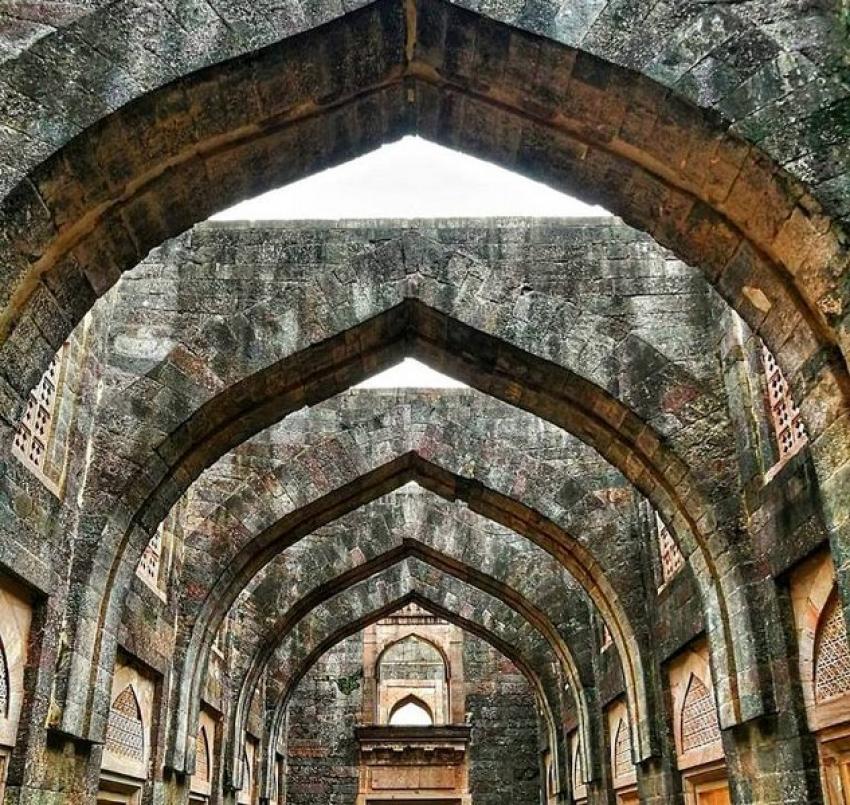
Hindola Mahal: An architectural marvel, an audience hall in all likelihood, it was built on a ‘T’- shaped plan with a main hall and a transverse projection. The wide sloping buttresses on the side creates an illusion of movement (hence the name ‘hindola mahal’ or the swinging palace).
Darya Khan’s Tomb: Built around the early 15th century, it is marked by a large central dome surrounded by small domes at the four corners of the roof while the interior is square and has arches built in the corners to support the domes above.
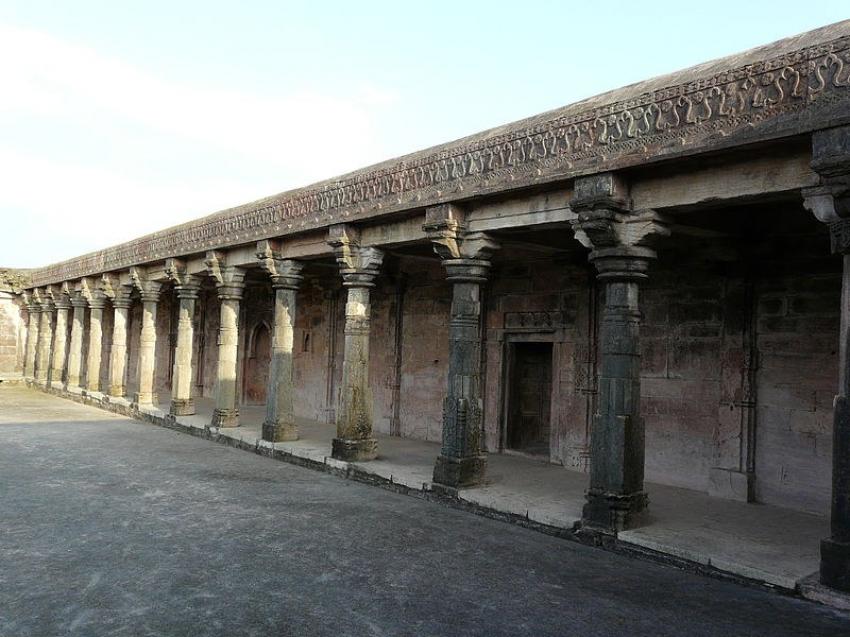
Dilawar Khan’s Mosque: This colonnaded mosque dating back to the early 15th century is said to be the oldest structure in Mandu.
Gada Shah’s Shop: Although the identity of Gada Shah remains a mystery, the shop and house are known for their architectural style. You may also have a peek at the nearby stepwells – Andheri and Ujala baodis.
Dai-ka-Mahal: This and the Dai-ki-Chhoti-Behan-ka-Mahal, lying near the Sagar Talao, are located in a lonely corner. But do be careful as the area is covered in dense vegetation.
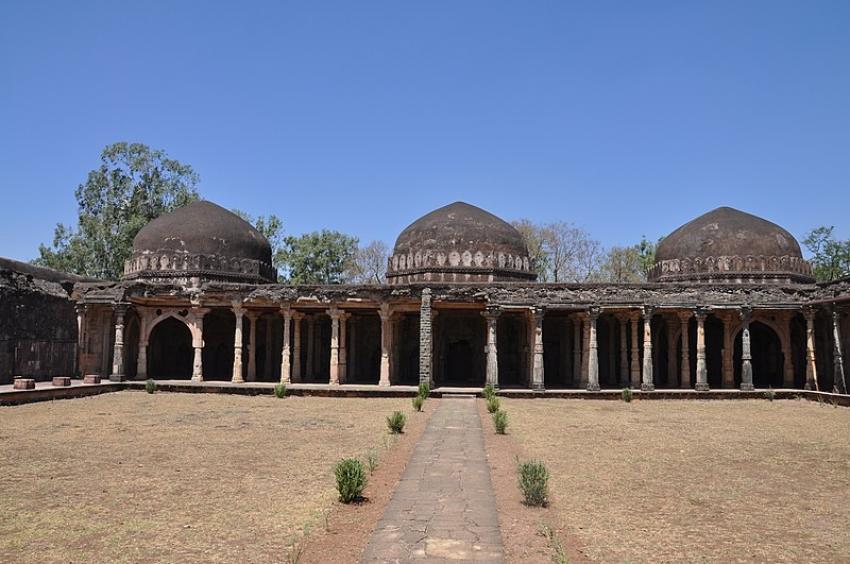
Malik Mughith’s Mosque: Lying near Sagar Talao, this edifice was built in 1432 according to a tablet written in Persian and located near the entrance. The once grand edifice is survived by an arched entrance, a few domes, rooms, the central courtyard, etc. A medieval Caravan Serai (inn), said to be largest of its kind in Mandu, stands opposite the mosque.
Nilkanth Temple: Located in a lightly wooded corner, some distance from the main town square, this temple is dedicated to Shiva. Apparently the temple lends its name to the palace that was built here for Mariam Us Zamani (popularly known as Jodha Bai), the favourite wife of Emperor Akbar.
There are many other historical buildings in and around Mandu, such as Nahar Jharokha, Champa Baodi and the Jal Mahal, Ek Khamba Mahal, the Hathi Mahal, etc.
Information
Mandu can be visited round the year except for peak summer. The nearest airport is Indore, 100km by road. Indore and Ratlam (124km by road) are two of the most convenient railheads. Mandu is also well connected by road transport with Dhar, about 40km away.
There are both private and state tourism owned hotels in Mandu. The Malwa Resort (near Sagar Talao) and the Malwa Retreat run by MP Tourism Hotels and Resorts are the best places to stay in Mandu.
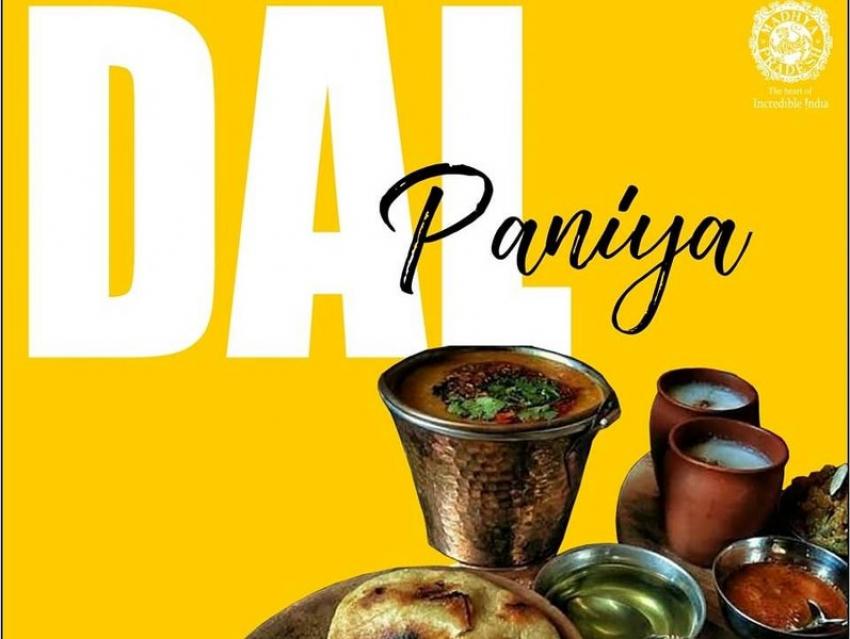
While in Mandu, do try out local food such as ‘dal paniya’ (largely similar to ‘dal baati’) and juice extracted from the Baobab fruit. Baobab trees, a native of Africa, was likely a gift from the Caliphs of Egypt to the Sultans of Mandu.
If you are visiting Mandu in winter, check with the MP Tourism offices about the dates of the Mandu Festival.


